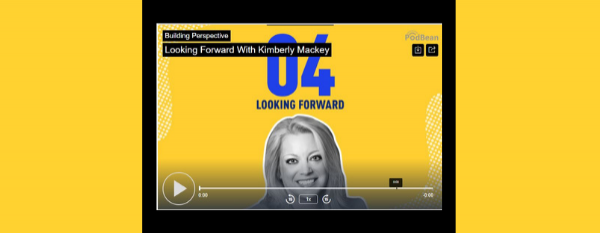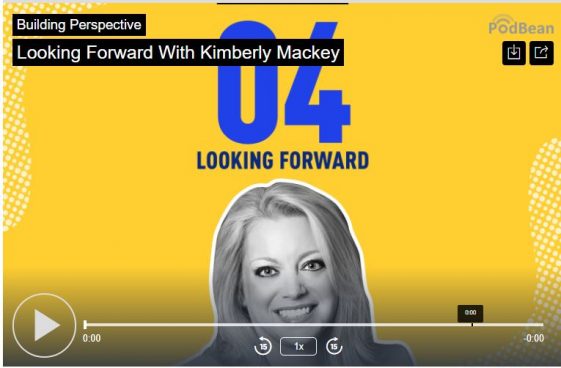Here is a snippet of the transcript:
…Mollie: And it’s obvious to see that it’s a major time commitment at your level. So you’re putting in all this time and, you know, dedicating to making the industry better. And that is a great opportunity for us all to learn from you.
So like how do you manage time to be able to give that much back to the industry?
Kimberly: Well, I’m fortunate that I do have a team behind me, so that’s helpful. so some of my accounts, you know, have the, having an account manager, particularly my Berkshire, how, the way where I run the builder relations program for them, which I’ve [00:16:00] been doing for 11 years now, I have somebody who runs the day to day for that.
So that frees me up to do the other things. And I time block. so it was pretty old school. And you know, it’s not about using a particular app or this. I mean, I use a calendar, I use my outlook I’m I am addicted to outlook. I can’t break it. I can’t go to Gmail. it drives me insane. I do have Gmail, for business, but I just, and I’ve worked with clients that, you know, I had to be totally on Gmail for them and it just makes me insane.
I can’t break the outlook habit, because the calendar function and the task function to me just, it keeps me on the straight and narrow. I’ve I it’s been a challenge. I will tell you what this whole pandemic, I mean, I was used to being on the road two to three weeks out of the year. I mean out of the month.
and so now that I’m here, one day does kind of drag into the next and urgency has seemed to not be as, as much like, Oh, well I [00:17:00] wouldn’t do it tomorrow. You know, the time-blocking, that’s what keeps me, that’s what keeps me on track. And whenever my time blocks get out of whack, I find my productivity goes down.
tell me
Mollie: more about time-blocking just because I, you know, are you talking about like managing your calendar and literally planning out your day? Like, what does that actually look like for you?
Kimberly: So I actually have a spreadsheet that I have graphed out. And I color code cause I like pretty things. so, and I learned here’s a little trick that I learned with it.
So instead of using the actual blocks or the grids and the in Excel, I actually create text boxes and I put in whatever the thing is. And the reason I do it with a text box is now when my week goes out of whack, like last week, I was literally tied up for four days, doing six hours, zoom trainings. So obviously.
Anything my day job had to like shift to L after, after that and all the stuff that I still had to get done [00:18:00] shifted till after I was through training, which was tough because I was exhausted after six hours on zoom. I mean, Zoom zoom fatigue is a real thing. People I’m telling you, especially when you do that.
but so I can take those text boxes and I just shift them around. I don’t have to like retype it or cut and paste or worry about any, reformatting. I just move those slide, those text boxes around and that way I can visually see, okay, what do I need to do? What are my big chunks of things that I need to get done?
And these are the things that are, they’re, they’re my proactive time. And I make sure I get that proactive time in before my reactive time. So I’m always available for different things that people need from me or projects that I’m working on, where I need to react. I need to be able to react to my clients and whatever crisis or challenge comes up for the day or the phone calls or the text messages, or, you know, any of those things that any of us have.
So I actually time block that part in [00:19:00] that that’s my reactive time. And then if I am, I’m working on a project and I don’t know, I don’t have to react to anybody then I, you know, I can get a project done during that time, but. onsite salespeople. I coach them to their floor. Time should be reactive time.
Right? So the time they’re going to meet with customers, but the con the time they’re going to have to manage their pipeline, especially right now, it’s more pipeline management than it is a walk in traffic management. you know, all of those things and like block out that time. That’s your floor time.
That’s your reactive time. And then the time to get your projects done on your paperwork, done to do all of the reporting and all of the things in your planning, that’s gotta be your proactive time. And you’ve got to set that aside. That’s gotta be before you go on floor time or after maybe you’re like, maybe your energy is higher in the evening.
So I have two bursts of energy during the day. And it’s usually from, from about eight to 10 in the morning, there’s like my big energy time, or I can just like really focus and button down and get [00:20:00] things done before the phone starts ringing. And then in the evening, as people are settling down, so like between five and seven, then so I know that that can be so that’s four hours a day that I can dedicate to projects.
And then the rest of the time, then I can have meetings. I can do my coaching sessions and I can meet with, I can have my association. Yeah.
Mollie: Yeah. So I w I want to stop right there because to me, this is a golden nugget because. Proactive versus reactive. I tend to have the mentality that we don’t want to be reactive.
We want to be proactive, proactive, proactive, and it has never occurred to me to manage your reactive time. you’re you, you know, you manage the things that you can be proactive about. So you have the time to, for the reactive. tasks that you have in your day. And that’s, that’s really interesting because I’ve never looked at it that way.
Kimberly: When I got into this industry, [00:21:00] I struggled with how much reaction time I had to have, and I felt a bit out of control. And as you might can tell from my personality, I’m a little bit of a control freak. So this was my way of figuring out how to control the chaos. Or manage it. And if I couldn’t control it, at least I could manage it and try to contain it a little bit because otherwise I was just exhausted.
I just felt like it was just take, take, take all the time and I couldn’t ever get ahead of it, you know, and this way I can be ahead of it. And most of the time, I mean, not all the time, certainly. and you know, it’s, it’s just my way of trying to balance it out. And obviously every day is a new day to start over.
So some days I’m more successful than other days.
Matt: Yeah. And, and Kimberly, I think that it’s really, really insightful and super smart to teach that reactive and proactive time. I really like [00:22:00] the C like put the reactive time on your calendar. And I, from what I see what I’ve seen in the industry and being starting off, you know, being an onsite salesperson for so many years, you know, when the model…… [To view the whole transcript or listen to the podcast, CLICK HERE ]



Sorry, comments are closed for this post.